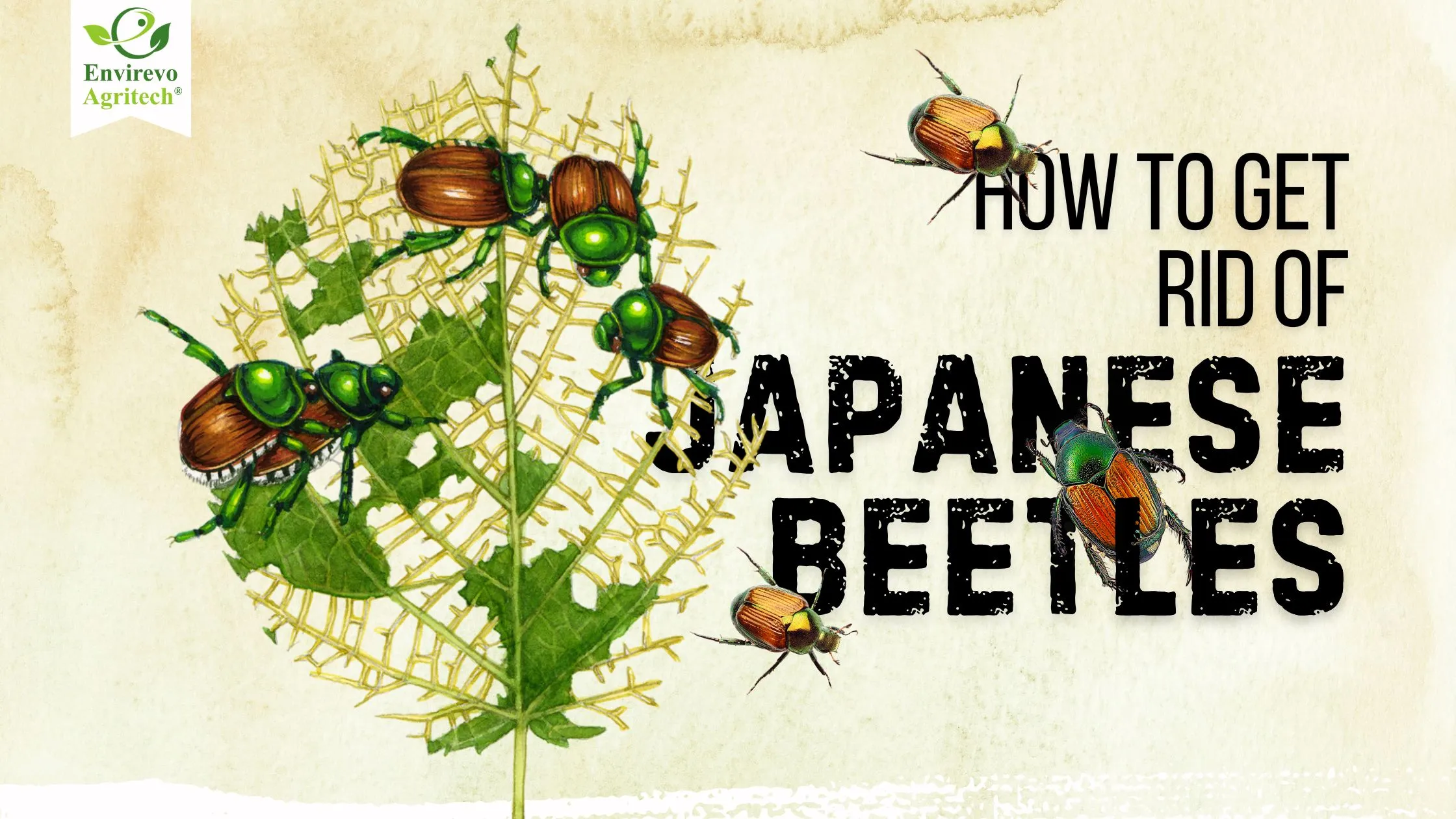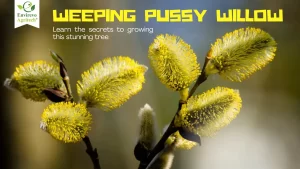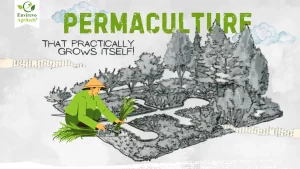Table of Contents
Japanese beetles (Popillia japonica) are among the most destructive garden pests in North America. These metallic green and copper insects feed on over 300 plant species, including roses, grapes, beans, and turfgrass, causing significant damage to leaves, flowers, and roots. Their larvae, known as grubs, also wreak havoc underground by feeding on plant roots, leading to brown patches in lawns. Managing Japanese beetle infestations requires a multifaceted approach, combining manual removal, natural deterrents, and strategic planting.
In this comprehensive guide, we’ll explore nine effective methods to eliminate Japanese beetles from your garden swiftly and sustainably.
How To Identify Japanese Beetles
Adult Japanese beetles are easily recognizable by their unique coloration and physical characteristics:
- Size: Approximately 1/3 to 1/2 inch (8–11 mm) in length and 1/4 inch (5–7 mm) in width.
- Coloration: They possess a metallic green head and thorax with coppery-brown wing covers (elytra) that do not completely cover the abdomen.
- Distinctive Markings: A key identifying feature is the presence of six white tufts of hair along each side of the abdomen and a pair on the last abdominal segment.
- Antennae: Their antennae are clubbed and can fan out, aiding in detecting pheromones released by other beetles.

These beetles are most active during warm, sunny days and are commonly found feeding on a variety of plants, including roses, grapes, and linden trees.
Japanese Beetle Life Cycle
🥚 Egg Stage
Timing: Late June to August
After mating, female Japanese beetles lay their eggs in moist, grassy soil, often in lawns or pastures. They burrow approximately 2 to 4 inches deep to deposit 1 to 5 eggs at a time, eventually laying between 40 to 60 eggs over their lifespan.
Development: The eggs are small, white, and oval-shaped. Within about two weeks, depending on soil temperature and moisture, the eggs hatch into larvae.
🐛 Larval (Grub) Stage
Timing: Late summer through spring
Upon hatching, the larvae—commonly known as grubs—begin feeding on the roots of grasses and other plants. They progress through three instars (growth stages), growing larger with each molt. By late autumn, the grubs are about an inch long and curl into a characteristic C-shape.
Overwintering: As temperatures drop, grubs burrow 4 to 8 inches deeper into the soil to overwinter. In early spring, they return to the root zone to resume feeding.
🐞 Pupal Stage
Timing: Late spring
After feeding in the spring, mature grubs enter the pupal stage. They form pupae in the soil, undergoing transformation over approximately two weeks.
Emergence: Following pupation, adult beetles emerge from the soil to begin the cycle anew.
🪲 Adult Stage
Timing: Late June through August
Adult Japanese beetles are approximately 1/2 inch long, with metallic green bodies and copper-colored wing covers. They live for about 30 to 45 days, during which they feed on over 300 plant species, including roses, grapes, and linden trees.
Reproduction: During their active period, adults mate and females lay eggs in the soil, continuing the life cycle.
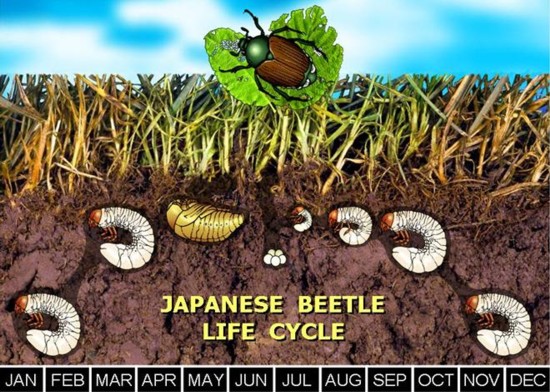
Symptoms of Japanese Beetle Infestation
1. Skeletonized Leaves
One of the most distinctive signs of adult Japanese beetle activity is the skeletonization of leaves. The beetles consume the soft tissue between the leaf veins, leaving behind a lace-like structure. This damage is particularly evident on plants such as roses, grapes, and linden trees.
2. Damaged Flowers and Fruits
Beyond foliage, adult beetles feed on the petals of flowers and the surfaces of fruits, leading to unsightly blemishes and reduced marketability. Affected flowers may appear ragged, and fruits can exhibit scarring or premature drop.
3. Visible Beetle Activity
During peak activity periods, typically from late June through August, adult beetles are often seen congregating on plants, especially in sunny areas. Their metallic green bodies with copper-colored wing covers make them easily identifiable.
4. Brown or Dead Patches in Lawns
Grubs feed on the roots of grasses, leading to irregularly shaped brown patches in lawns. These areas may initially resemble drought stress but do not recover with watering.
5. Spongy or Easily Lifted Turf
Severe grub infestations can destroy the root system, causing the turf to feel spongy underfoot. In such cases, the grass can often be rolled back like a carpet, revealing numerous C-shaped white grubs beneath.
6. Increased Animal Activity
The presence of grubs attracts predators such as birds, skunks, and raccoons. These animals dig into the lawn to feed on the grubs, resulting in additional damage in the form of holes and overturned soil.
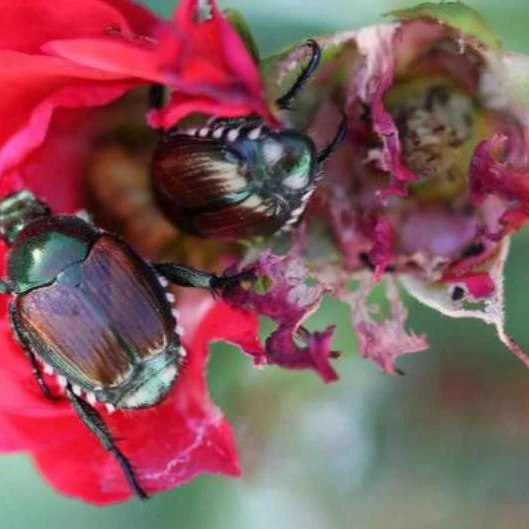
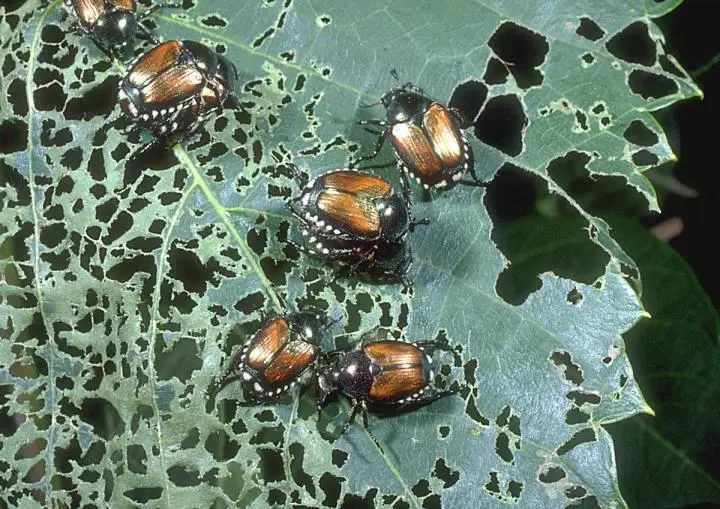
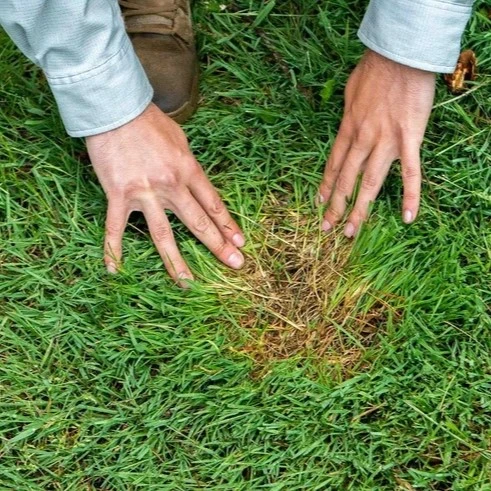
How to Get Rid of Japanese Beetles – 9 Proven Methods
1. Handpick Beetles Daily
Manual removal is one of the most effective and environmentally friendly methods to control Japanese beetles, especially in smaller gardens. These beetles are most active during warm, sunny afternoons and tend to congregate on the upper surfaces of plants.
How to Handpick:
- Timing: Early morning or late evening is ideal, as beetles are less active and easier to collect.
- Method: Gently shake the plant or use your hands to dislodge beetles into a container filled with soapy water. The soap breaks the surface tension, causing the beetles to sink and drown.
- Frequency: Daily inspection and removal are crucial during peak beetle season (late June to August).
Regular handpicking not only reduces the beetle population but also prevents the release of aggregation pheromones that attract more beetles to your garden.
2. Apply Soapy Water Sprays
A homemade soapy water spray can serve as an effective contact insecticide against Japanese beetles. The soap disrupts the beetles’ cell membranes, leading to dehydration and death.
Preparation and Application:
- Solution: Mix 1-2 tablespoons of dish soap with a quart of water in a spray bottle.
- Application: Spray directly onto beetles and affected plant areas, ensuring thorough coverage.
- Caution: Test on a small plant section first to ensure there’s no phytotoxicity. Avoid spraying during the hottest part of the day to prevent plant damage.
While effective, soapy sprays can also harm beneficial insects, so use them judiciously and target only infested areas.
3. Avoid Pheromone Traps
Pheromone traps are commercially available and designed to lure Japanese beetles using synthetic sex attractants. However, these traps often do more harm than good.
Why to Avoid:
- Attraction Radius: Traps can attract beetles from up to five miles away, potentially increasing the local beetle population.
- Placement Issues: If not placed far enough from desired plants (at least 30 feet), traps can lead beetles directly to your garden.
- Ineffectiveness: Traps may not capture all attracted beetles, leaving many to feed on your plants.
Given these drawbacks, it’s advisable to avoid pheromone traps and focus on more effective control methods.
4. Plant Trap Crops
Trap cropping involves planting species that are more attractive to Japanese beetles than your main crops, luring beetles away from valuable plants.
Effective Trap Crops:
- Examples: Zinnias, four o’clocks, and evening primrose are known to attract Japanese beetles.
- Placement: Plant trap crops at a distance from your main garden to draw beetles away.
- Maintenance: Regularly inspect trap crops and remove beetles manually or treat with soapy water sprays to prevent breeding.
This strategy reduces beetle pressure on your primary plants and can be integrated into an overall pest management plan.
5. Use Row Covers
Physical barriers like row covers can effectively prevent Japanese beetles from accessing your plants.
Implementation:
- Timing: Install covers during the beetles’ active feeding period (late June to August).
- Material: Use fine mesh or floating row covers that allow light and water penetration but block beetles.
- Application: Secure covers tightly around the base of plants to prevent beetles from crawling underneath.
Row covers are especially useful for protecting high-value crops and can be removed once the beetle season has passed.
6. Choose Resistant Plants
Selecting plants less favored by Japanese beetles can reduce the likelihood of infestation.
Resistant Plant Options:
- Trees and Shrubs: Boxwood, dogwood, magnolia, holly, and red maple.
- Perennials: Begonia, columbine, and daylily.
- Annuals: Geraniums and impatiens.
Incorporating these species into your landscape design can create a less hospitable environment for Japanese beetles.
7. Apply Neem Oil
Neem oil, derived from the seeds of the neem tree, acts as a natural insecticide and repellent.
Usage Guidelines:
- Application: Spray neem oil solution (as per manufacturer’s instructions) onto affected plants, ensuring thorough coverage.
- Timing: Apply in the early morning or late evening to minimize harm to beneficial insects and prevent leaf burn.
- Frequency: Reapply every 7-14 days during active beetle periods.
Neem oil disrupts the beetles’ hormonal systems, deterring feeding and reproduction without harming non-target organisms when used correctly.
8. Introduce Beneficial Nematodes
Beneficial nematodes are microscopic worms that parasitize and kill Japanese beetle larvae in the soil.
Application Tips:
- Species: Use Heterorhabditis bacteriophora, which is effective against Japanese beetle grubs.
- Timing: Apply in late summer or early fall when grubs are present in the soil.
- Conditions: Ensure soil is moist and temperatures are between 55°F and 85°F for optimal nematode activity.
This biological control method targets the beetle’s life cycle, reducing future adult populations.
9. Incorporate Pest-Repellent Plants
Certain plants naturally repel Japanese beetles and other pests due to their scent or chemical composition.
Repellent Plants:
- Marigolds: Emit a strong scent that deters many insects.
- Catnip: Contains nepetalactone, which repels beetles.
- Nasturtiums: Act as a trap crop and repel certain pests.
- Lavender and Dill: Their aromatic properties can deter beetles and attract beneficial insects.
Integrating these plants into your garden not only enhances its beauty but also contributes to a natural pest management strategy.
You may also like:
- How to get rid of Squash Bugs
- Red Cotton Bug Damage, Symptoms and Control Measure
- How to Get Rid of Crayfish in Your Lawn: Best Control Methods
- Best 9 Tips To Get Rid of Flea Beetles In Your Garden
Plants Highly Susceptible to Japanese Beetles
| Plant Type | Common Names |
|---|---|
| Trees | American linden, birch, crabapple, Japanese maple, Norway maple, pin oak, cherry, plum, peach, apple |
| Shrubs | Roses, hibiscus, grapevines, raspberry, blackberry |
| Perennials | Beans, corn, okra, hollyhock, zinnia, sunflower |
| Others | Basil, evening primrose, marigold, dahlia |
Plants Resistant or Unattractive to Japanese Beetles
| Plant Type | Common Names |
|---|---|
| Trees | Ash, boxwood, dogwood, fir, hemlock, holly, magnolia, pine, red maple, spruce, tulip poplar |
| Shrubs | Forsythia, burning bush, juniper, lilac, yew |
| Perennials | Catnip, chives, garlic, larkspur, leeks, onions, tansy, white geranium, white chrysanthemum |
| Herbs | Rue, lavender, mint, thyme, rosemary |
Conclusion
Japanese beetles may be small, but their impact on gardens and landscapes can be substantial. Understanding their life cycle, identifying their preferred and avoided plants, and implementing effective control measures are crucial steps in managing these pests.
By recognizing the signs of infestation early and taking proactive measures, you can protect your plants and maintain the health and beauty of your garden. Remember, consistent monitoring and timely interventions are key to keeping Japanese beetle populations in check.
Have you encountered Japanese beetles in your garden? What strategies have you found effective in managing them? Share your experiences and tips in the comments below—we’d love to hear from you!
